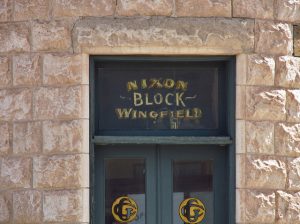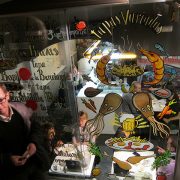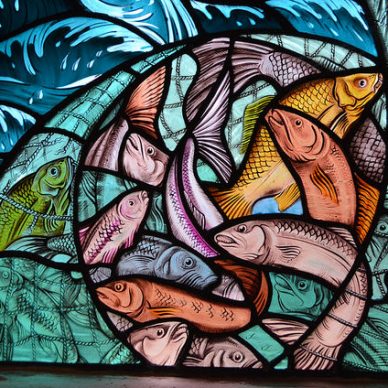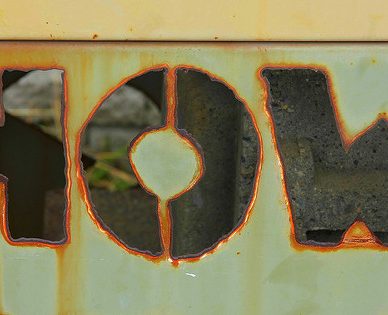Painted glass revives verre églomisé technique
Although back painted glass predates the Roman Empire, a refined version of the technique is making a comeback. Jean-Baptiste Glomy, an 18th century art dealer, revived and popularized the painted glass technique. Verre églomisé refers to a painting technique that uses both a painted design and gilding on glass.
Verre églomisé combines painted glass and gold leaf
Glomy’s original designs were small. Often he made them from picture frames and other small pieces of glass. Over time, other artists adopted the technique and expanded the canvas to include murals, signage and other large-scale images.
The technique requires the artist to create an image in reverse order. The artist applies the gilding and highlights first, then creates the background image on top of the highlights. Verre églomisé art examples created in the Middle Ages still exist.. Glomy didn’t invent the technique, but merely revived it in both Europe and North America.
The original verre églomisé technique used adhesive to apply to gold or silver leaf to the glass. Artists may have used a gelatin or oil-based adhesive. Afterward, they applied steam to the leaf to create a shiny, mirror-like finish. Once the adhesive dried, the artist applied additional colored paints to complete the image. Traditional verre églomisé work often uses plain paint colors because it contrasts well with the metal leaf.
True verre églomisé artwork incorporates a recognizable design into the finished piece. In more modern works, the term can describe backpainted works that use metallic leaf but do not use an obvious design. Painted commercial signs made heavy use of the verre églomisé technique prior to the development of more modern silk screening and UV inkjet printing on glass.
Glassprimer™ glass paint works well on painted glass projects. We also make an excellent glass primer designed especially for UV inkjet printing applications. If you would like more information about our products, or ideas for making decorative painted glass, please visit the rest of our website.
Photo Credit: Jasperdo, via Flickr






